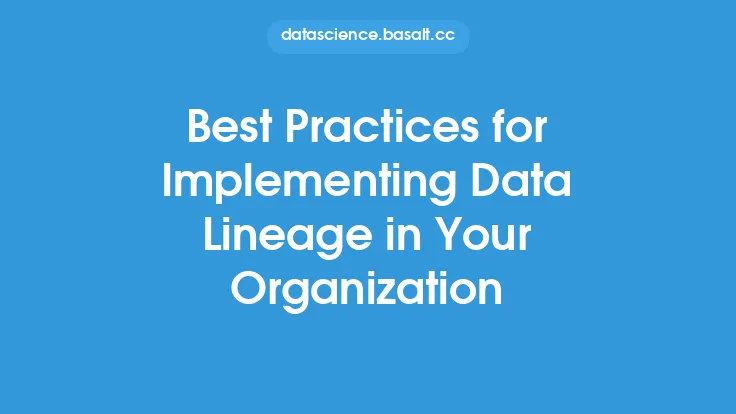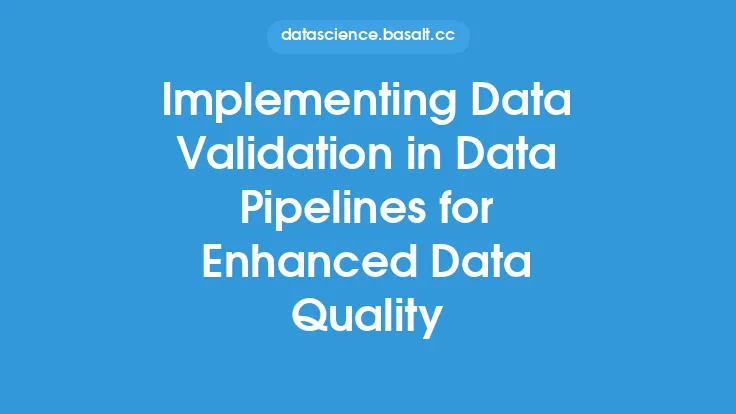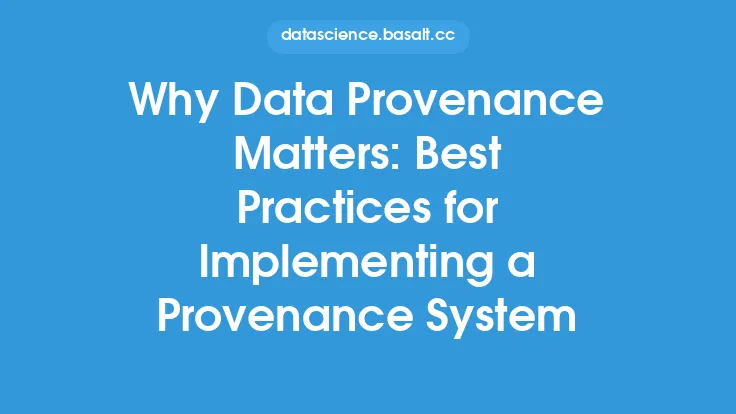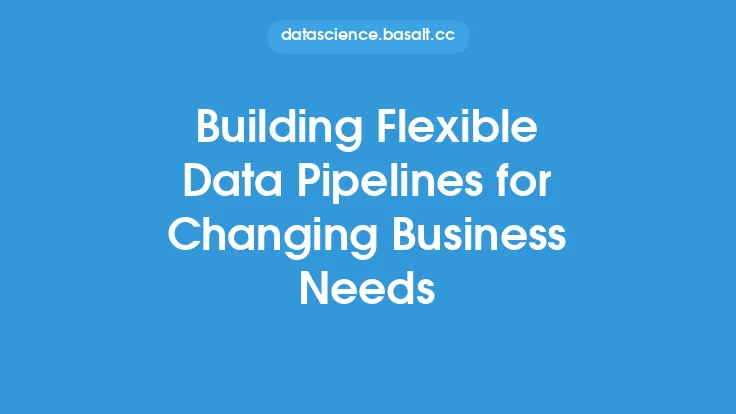Implementing data lineage in data pipelines is a crucial aspect of data engineering that provides transparency into the origin, processing, and consumption of data. Data lineage is the process of tracking and recording the data as it flows through the pipeline, from its source to its final destination. This information is essential for data engineers, data scientists, and business stakeholders to understand the data's quality, accuracy, and reliability.
What is Data Lineage?
Data lineage is the ability to track and record the data's journey through the pipeline, including its origin, transformations, and final destination. It involves capturing metadata about the data, such as its source, processing steps, and output. Data lineage provides a clear understanding of how the data is generated, processed, and consumed, enabling data engineers to identify data quality issues, optimize data processing, and improve data governance.
Benefits of Data Lineage
Implementing data lineage in data pipelines offers several benefits, including:
- Improved data quality: By tracking the data's origin and processing steps, data engineers can identify data quality issues and take corrective action.
- Increased transparency: Data lineage provides a clear understanding of how the data is generated, processed, and consumed, enabling business stakeholders to make informed decisions.
- Enhanced data governance: Data lineage helps data engineers to identify data ownership, data stewardship, and data security, ensuring that data is handled and processed in accordance with organizational policies and regulations.
- Better data analytics: By understanding the data's origin and processing steps, data scientists can develop more accurate and reliable analytics models.
Components of Data Lineage
Data lineage consists of several components, including:
- Data source: The origin of the data, such as a database, file, or API.
- Data processing: The steps involved in processing the data, such as data transformation, data aggregation, and data filtering.
- Data output: The final destination of the data, such as a data warehouse, data lake, or analytics platform.
- Metadata: The information captured about the data, such as its source, processing steps, and output.
Data Lineage Techniques
There are several techniques used to implement data lineage in data pipelines, including:
- Data tagging: Assigning metadata tags to the data to track its origin, processing steps, and output.
- Data watermarking: Adding a unique identifier to the data to track its journey through the pipeline.
- Data provenance: Capturing information about the data's origin, processing steps, and output to provide a clear understanding of its journey.
Data Lineage Tools
Several tools are available to implement data lineage in data pipelines, including:
- Apache Atlas: A data governance and metadata management platform that provides data lineage capabilities.
- Apache NiFi: A data integration platform that provides data lineage capabilities.
- Informatica: A data integration platform that provides data lineage capabilities.
- Talend: A data integration platform that provides data lineage capabilities.
Implementing Data Lineage
Implementing data lineage in data pipelines involves several steps, including:
- Identifying the data sources and outputs: Determining the origin and final destination of the data.
- Capturing metadata: Collecting information about the data's origin, processing steps, and output.
- Tracking data processing: Monitoring the data as it flows through the pipeline and capturing information about its transformations and aggregations.
- Storing metadata: Storing the captured metadata in a centralized repository for easy access and analysis.
Challenges and Limitations
Implementing data lineage in data pipelines can be challenging, and several limitations exist, including:
- Complexity: Data pipelines can be complex, making it difficult to track and record the data's journey.
- Scalability: Large datasets and high-volume data pipelines can make it challenging to capture and store metadata.
- Data quality: Poor data quality can make it difficult to capture accurate metadata, reducing the effectiveness of data lineage.
Best Practices
To implement data lineage effectively, several best practices should be followed, including:
- Start small: Begin with a small pilot project to test and refine the data lineage implementation.
- Use automation: Automate the capture and storage of metadata to reduce manual effort and improve accuracy.
- Use standardized metadata: Use standardized metadata formats to ensure consistency and interoperability.
- Monitor and analyze: Continuously monitor and analyze the metadata to identify data quality issues and optimize data processing.
Conclusion
Implementing data lineage in data pipelines is essential for providing transparency into the origin, processing, and consumption of data. By tracking and recording the data's journey, data engineers can identify data quality issues, optimize data processing, and improve data governance. While challenges and limitations exist, following best practices and using the right tools can help ensure effective data lineage implementation. As data volumes and complexities continue to grow, data lineage will become an increasingly important aspect of data engineering, enabling organizations to make informed decisions and drive business success.





